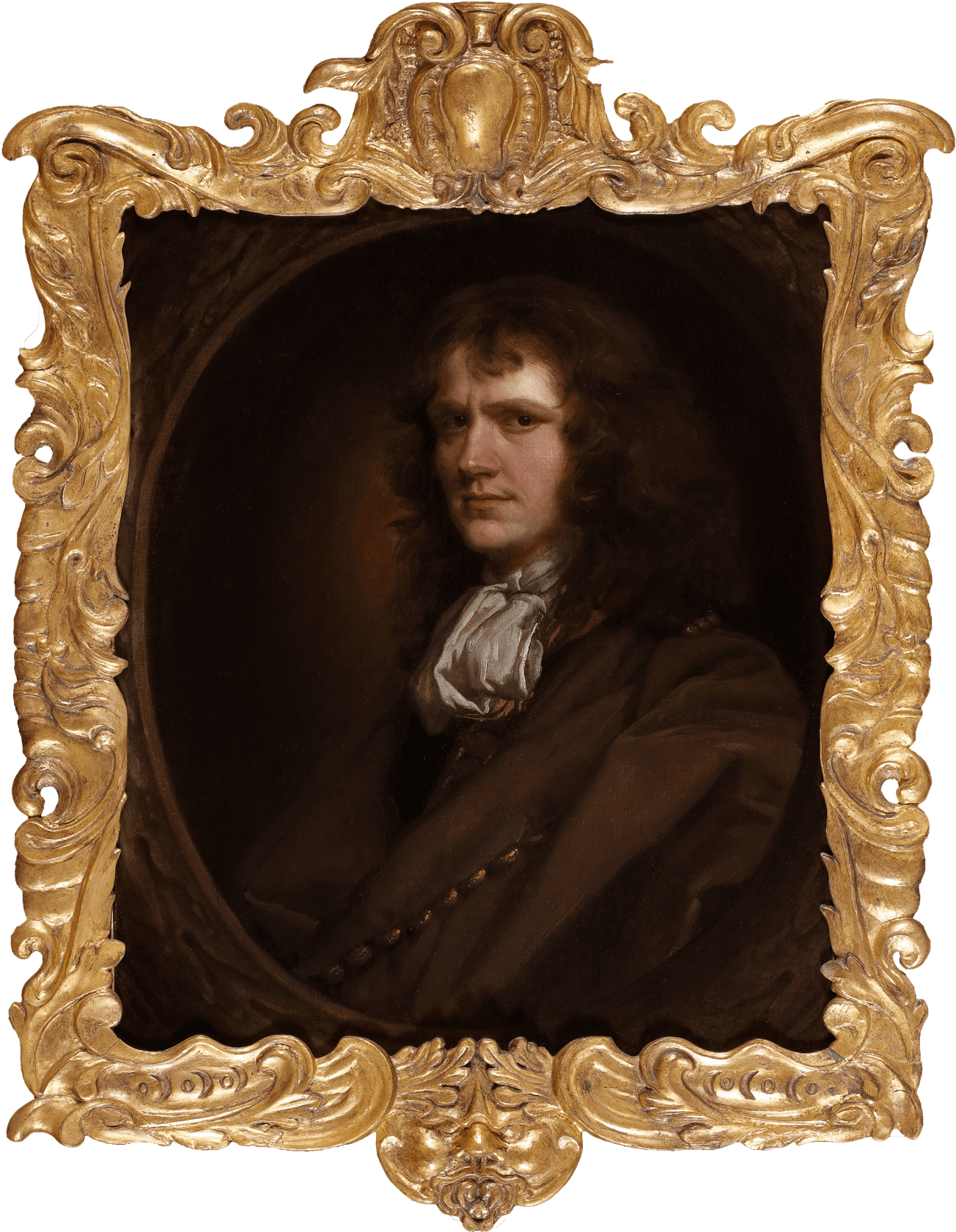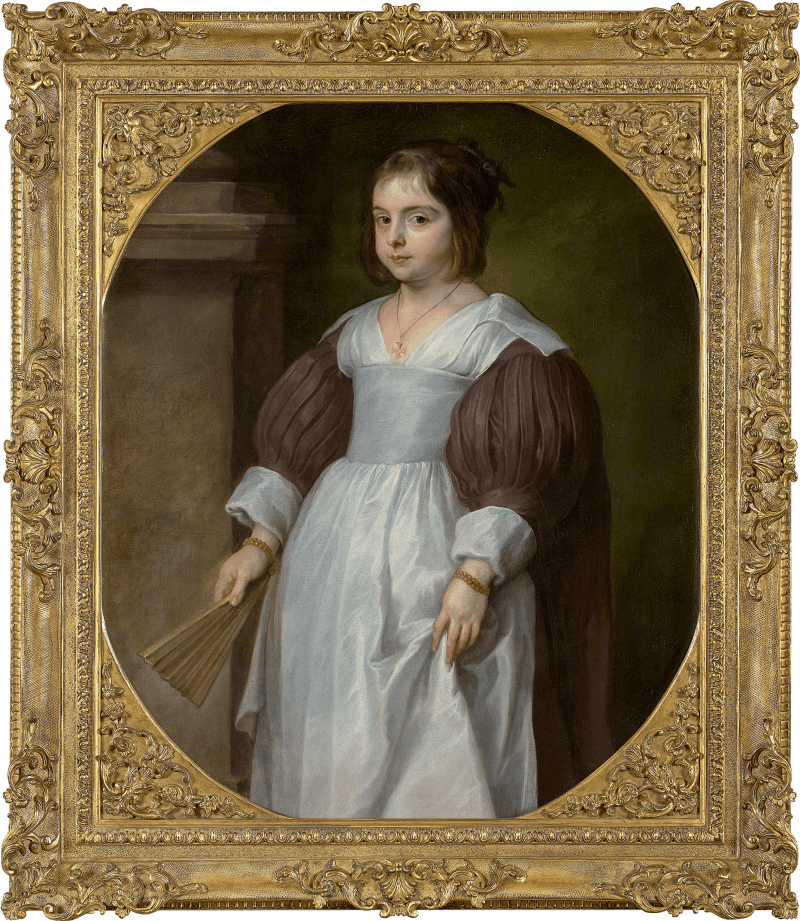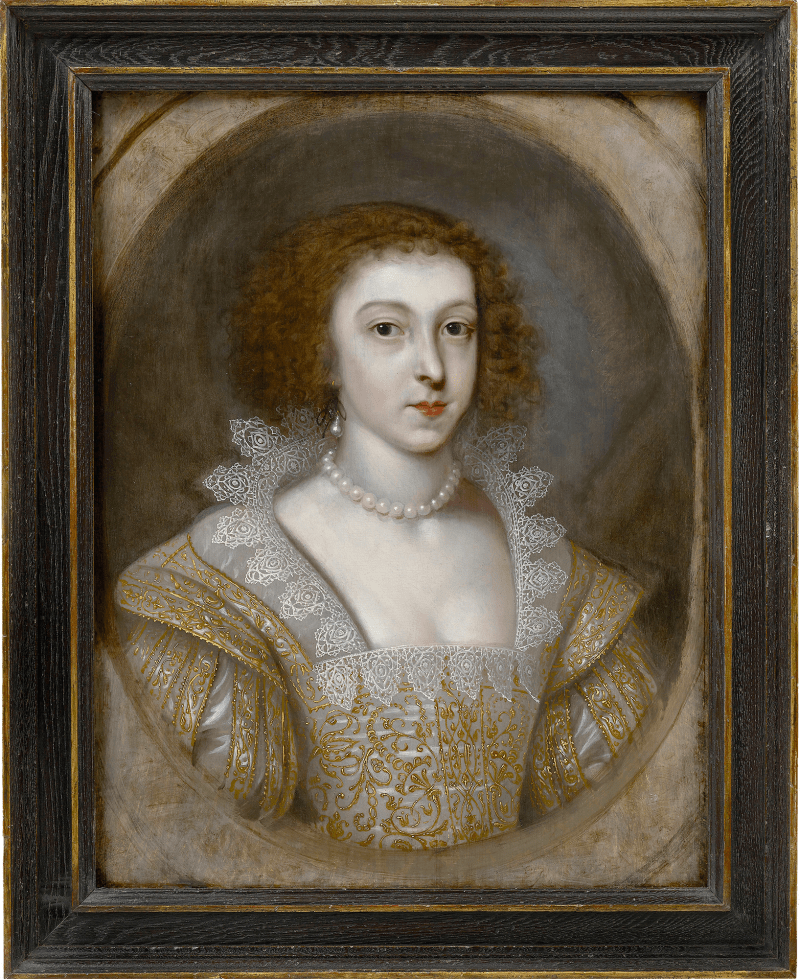Sir Peter Lely’s character and talent dominated the art world of the second half of the seventeenth century in England. Though Pepys famously described him as ‘a mighty proud man and full of state’, Lely’s skill for portraiture meant he assumed the mantle of Sir Anthony van Dyck with ease. Despite sharing the stage with many accomplished painters, the particular brio of his technique and his considerable personal charm guaranteed him the most prestigious patronage. Everyone of consequence in his age sat to him, and it is in his portraits that we form our conception of the cautious solemnity of the 1650s and the scandalous excesses of the years following the Restoration.
This portrait is a superb example of Lely’s technique at what is arguably the highpoint of his artistic development. Here, the complete (and exceedingly difficult) mastery of tone so perfected by Rembrandt, and redolent of Lely’s early education in Holland, is combined with his admiration for...
Sir Peter Lely’s character and talent dominated the art world of the second half of the seventeenth century in England. Though Pepys famously described him as ‘a mighty proud man and full of state’, Lely’s skill for portraiture meant he assumed the mantle of Sir Anthony van Dyck with ease. Despite sharing the stage with many accomplished painters, the particular brio of his technique and his considerable personal charm guaranteed him the most prestigious patronage. Everyone of consequence in his age sat to him, and it is in his portraits that we form our conception of the cautious solemnity of the 1650s and the scandalous excesses of the years following the Restoration.
This portrait is a superb example of Lely’s technique at what is arguably the highpoint of his artistic development. Here, the complete (and exceedingly difficult) mastery of tone so perfected by Rembrandt, and redolent of Lely’s early education in Holland, is combined with his admiration for Van Dyck, whose elegant style increasingly became the starting point for all Lely’s later work.
The 1660s mark an important transition in Lely’s technique, at a time when his style had already begun to be heavily influenced by Van Dyck through studying works in the collections of patrons such as the Earl of Pembroke. But after the Restoration in the 1660s, demand for portraits in the grand Caroline style grew so rapidly that pressures of time forced Lely to further modify his technique: pigment began to be applied more thinly; less ground was used to build up backgrounds; and the pervasive hand of the (albeit accomplished) studio assistant became increasingly apparent.
At the time of this portrait, however, Lely’s later technique had not totally eclipsed his innate, Rembrandt-esque talent for capturing light, and with it character. Here, the sitter’s piercing intensity is created by an accomplished exercise in tonal gradations – the subtle handling of a limited palette essentially containing only four colours; brown, white, black and red – thus ensuring that we focus only on the character of the sitter, and are not distracted by costume or background. Perhaps the most ingenious touch is the emergent backlight which offsets the thickly applied pigments in the face, and which instantly adds depth to the whole composition, while the delicate highlights on the sitter’s left shoulder are enough to complete the sense of dimension, as his clothing appears to spill out over the painted oval frame. This sense of drama, captured throughout with the mastery of drawing that made Lely the most accomplished draughtsman after Van Dyck, ensures that we are fastened with a piercing gaze in a portrait of presence and power that few other artists – even across Europe – could have achieved at that time.
Henry Harris was one of the leading actors of the late seventeenth century, and is known to us chiefly through his friendship with Samuel Pepys. He was recorded by Pepys to have demanded, and got, £20 for each new play – more than any other actor – and in 1663 he was made Yeoman of the Revels for life, with lodgings at court. As part of the new generation of actors eager to please a post-Puritan audience, Harris played an important role in leading Londoners out of the rigid austerity of Cromwell’s republic into the florid grandeur of the Stuart monarchy. He performed regularly for the King and the Duke of York. His friendship with Pepys began in 1667, the diarist thinking him ‘a very excellent person, such as in my whole [life] I do not know another better qualified for converse… I was mightily pleased with his company’ ’. He was a ‘very curious and understanding person in all pictures and other things – and a man of fine conversation’, and Pepys seems to have relied on the actor, who was something of a rogue, to experience the wilder antics of London life. After one evening of drink and merriment, he noted that ‘…Lord, their mad bawdy talk did make my heart ake.’’ Furthermore, the two evidently enjoyed art, for they visited both Samuel Cooper, the miniaturist, and John Hayls, from whom Pepys commissioned Harris’ portrait in 1668. Indeed, Harris was initially known as an artist, and later earned in excess of £300 per annum as chief engraver at the Royal Mint.
Apart from a damaged and since removed nineteenth century inscription reading ‘I Har?...s’ (Harris was sometimes called Joseph), a number of factors point towards an identification of Henry Harris as the sitter. There is first the knowledge that the sitter is evidently a performer. In pose and atmosphere this portrait is similar to Godfrey Kneller’s head-and-shoulders portrait of Thomas Betterton, another leading actor [National Portrait Gallery, poss. a studio copy]. Both portraits are distinct in representing sitters with expressions, and stand out from the unmoving visages so normally seen in seventeenth century portraiture. The heavily buttoned attire is also a departure from the more conformist baroque costume of the period, and confirms a bohemian propensity in the sitter. Finally, there is an almost complete physiognomic resemblance to the only known surviving portrait of Harris by John Greenhill [Magdelene College Oxford c.1663] – Lely’s most talented pupil - particularly in relation to the hooded eyes and sculpted nose.

















